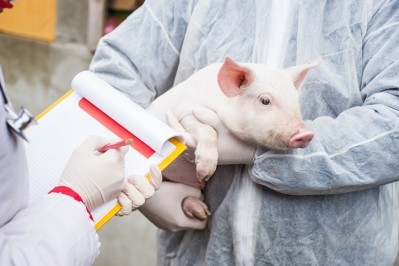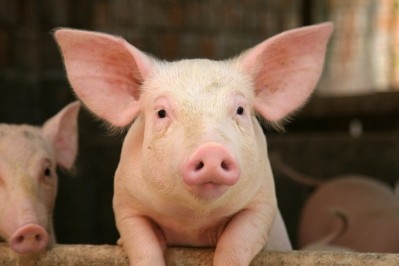Feed ingredients may play host to PEDv during shipment

A group of US researchers examined if feed ingredients from China infected with PEDv could have carried live strains of the virus into the US.
Previous research has demonstrated the virus’ ability to live in feed and feed ingredients, and that those products can be used to infect young pigs, said the researchers. “As the original PEDV detected in the US is closely related to a Chinese variant, it raises the question whether contaminated feed ingredients imported from China could have served as a source for viral entry to the US in 2013,” they added.
The research started after the outbreak of PEDv in the US, said researcher Scott Dee, with Pipestone Veterinary Service. The group was trying to reduce the risk of future infections in the US swine herd.
They were trying to determine how the virus arrived in the US after questions arose about contaminated feed and the containers used to transport ingredients internationally, he told FeedNavigator. “You’ve got to have a contaminated product to get to the [shipping] bag – they go hand in hand, but the ingredient is the chicken that lays the egg.”
“We were trying to model whether contaminated feed ingredients could be a source for PEDv” he said. “Is this a potential risk for this virus that appears to have come from China?”
The experiment demonstrated that contaminated feed ingredients could potentially bring in the virus, he added.
Experiment details
In the experiment, researchers infected a series of feed samples with the virus and controls and then evaluated them after several time phases, said the researchers. Testing included changes in temperature and relative humidity to mimic travel.
“To evaluate PEDv viability over time, ingredients were organized into 1 of 4 batches of samples, each batch representing a specific segment of transport. Batch 1 (segment 1) simulated transport of contaminated ingredients from manufacturing plants in Beijing (day 1 post-contamination (PC)),” they said. “Batch 2 (segments 1 and 2) simulated manufacturing and delivery to Shanghai, including time in Anquing terminal awaiting shipment (days 1–8 PC). Batch 3 (segments 1, 2 and 3) represented time in China, the crossing of the Pacific and entry to the US at the San Francisco, CA terminal (day 1–27 PC). Batch 4 (segments 1–4) represented the previous events, including transport to Des Moines, IA (days 1–37 PC).”
Feed ingredients tested included conventional and organic soybeans and meal, lysine hydrochloride, tryptophan, vitamins A, D and E, D-L Methionine, choline, feed grade tetracycline, rice hulls, and corn cobs, they said. Additionally, control groups were set and two treatments, a commercial liquid antimicrobial (LA) and a custom medium chain fatty acid mix (MCFA) were used.
At the end of the time periods, samples were tested for viable virus with a PCR (polymerase chain reaction) test and VI (virus isolation) test, they said. Samples that were positive in the PCR but did not show growing virus in the VI test were fed to piglets.
Results
In the samples treated with LA or MCFA, no living stains of PEDv were found, said the researchers.
However, in the non-treated samples several ingredients were found to carry live virus for the length of the trip, they said. Those ingredients include organic and conventional soybean meal, vitamin D, lysine hydrochloride and choline chloride.
Piglets that were fed the non-treated sample of choline chloride did display signs of PEDv, but not for any of the other ingredients tested by swine bioassay.
“Now we have some objective data to say, ‘We have some risk, let’s explore it,’” said Dee. “What else do we need to know? What else can we do?”
Experiments with the ingredients need to be run again to verify the original finding, he said.
“We bring in a lot of organic feed from China,” he said. “I was surprised to see that and I was surprised to see how well the virus lived in my organic sample – that type of product may be a risk to our national herd.”
For the present, he said, one prevention measure may be to limit the amount of feed ingredients being imported.
What’s next?
The group is set to look at surrogate viruses, or viruses with structures that are similar to other diseases that have not arrived in the US, said Dee.
The work will be checking to see if other viruses have the same ability to survive in feed ingredients, he said. “It will give us a good indication,” he added.
Source: BMC Veterinary Research
Title: Modeling the transboundary risk of feed ingredients contaminated with porcine epidemic diarrhea virus
DOI: 10.1186/s12917-016-0674-z
Authors: S Dee, C Neill, A Singrey, T Clement, R Cochrane, C Jones, G Patterson, G Spronk, J Christopher-Hennings and E Nelson








